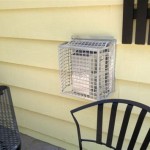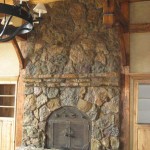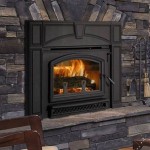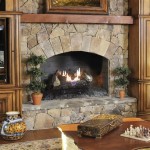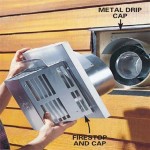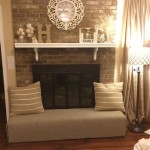Best Glowing Embers Gas Fireplace: A Comprehensive Guide
Gas fireplaces offer a compelling alternative to traditional wood-burning fireplaces, providing convenience, efficiency, and aesthetic appeal. One of the most sought-after features in a gas fireplace is the presence of realistic and mesmerizing glowing embers. These embers simulate the authentic appearance of a wood fire, adding depth, warmth, and ambiance to any living space. Selecting the best glowing embers gas fireplace involves considering several factors, including ember realism, heating capacity, safety features, and overall aesthetic integration with the intended environment. This guide aims to provide a comprehensive overview of the key aspects to evaluate when choosing a glowing embers gas fireplace.
The "glowing embers" effect in a gas fireplace is typically achieved through a combination of carefully designed gas burners, strategically placed ceramic fiber logs or pebbles, and a specialized media called "glowing embers." This media is usually composed of materials that radiate light and heat when exposed to the flame, creating the illusion of burning wood embers. The quality of these components significantly impacts the overall realism and visual appeal of the fireplace.
Key Considerations for Evaluating Glowing Embers Realism
The realism of the glowing embers is paramount for those seeking a truly authentic fireplace experience. Several elements contribute to achieving a convincing ember bed. These include the material composition, the arrangement of the embers, and the interaction with the gas flame.
Ember Material and Appearance: The material used to create the glowing embers plays a crucial role in their visual authenticity. High-quality embers are often crafted from ceramic fiber or specialized silica-based compounds that are capable of withstanding high temperatures without deteriorating or losing their luminosity. The texture and color of the embers should closely resemble those of real wood embers, exhibiting a subtle variation in shades of orange, red, and even hints of white to mimic the ash accumulation seen in a natural fire.
Ember Arrangement and Placement: The way the embers are arranged within the fireplace grate also contributes to their lifelike appearance. A random and irregular distribution of embers, with varying sizes and shapes, is more likely to replicate the organic look of a natural fire. Strategically placing larger embers closer to the flame source and smaller embers further away can enhance the depth and dimension of the ember bed. The positioning should avoid a uniform or artificial pattern, prioritizing a natural and seemingly haphazard arrangement.
Flame Interaction and Ember Glow: The way the gas flame interacts with the embers is another important factor to consider. The flames should dance and flicker around the embers, creating a dynamic play of light and shadow. The embers should glow intensely in areas directly exposed to the flame, gradually fading in intensity further away. The intensity of the glow should also respond to changes in the flame height and intensity, simulating the natural fluctuations of a wood fire. Fireplace designs that incorporate modulating gas valves can enhance this effect, as they allow for precise control over the flame height and intensity.
Heating Capacity and Efficiency
Beyond aesthetics, the heating capacity and efficiency of a gas fireplace are important factors to consider, particularly if the fireplace is intended to supplement the home's primary heating system. Heating capacity is typically measured in British Thermal Units (BTUs), with higher BTU ratings indicating a greater heating output. Efficiency refers to the percentage of fuel that is converted into usable heat, with higher efficiency ratings translating to lower operating costs.
BTU Rating and Room Size: Selecting a gas fireplace with an appropriate BTU rating for the intended room size is crucial for optimal heating performance. A fireplace with a BTU rating that is too low may struggle to effectively heat a large room, while a fireplace with a BTU rating that is too high may overheat a smaller space. General guidelines suggest that a fireplace with a BTU rating of 20,000 to 30,000 BTUs is suitable for heating a room of approximately 400 to 600 square feet, while a fireplace with a BTU rating of 30,000 to 40,000 BTUs may be necessary for heating a larger space of 600 to 800 square feet. It is important to consult with a qualified HVAC professional to determine the appropriate BTU rating for a specific application.
Efficiency Rating and Operating Costs: Gas fireplaces are available with varying efficiency ratings, typically ranging from 60% to 85%. Direct-vent gas fireplaces, which draw combustion air from outside the home and vent exhaust gases directly outdoors, tend to be more efficient than vent-free gas fireplaces, which draw combustion air from the room and vent exhaust gases directly into the room. Higher efficiency ratings translate to lower operating costs, as less fuel is required to generate the same amount of heat. While direct-vent fireplaces are generally more expensive to install due to the need for venting, they can offer significant long-term cost savings due to their higher efficiency.
Heating Technology and Features: Some gas fireplaces incorporate advanced heating technologies, such as multi-sided burners, modulating gas valves, and fans, to enhance their heating performance and efficiency. Multi-sided burners distribute heat more evenly throughout the room, while modulating gas valves allow for precise control over the flame height and heat output. Fans circulate warm air throughout the room, improving heat distribution and reducing temperature stratification. These features can improve the overall comfort and efficiency of the fireplace.
Safety Features and Compliance
Safety is a paramount consideration when selecting a gas fireplace. It is critical to choose a fireplace that meets all applicable safety standards and incorporates features designed to protect against potential hazards. These features can include flame sensors, oxygen depletion sensors, and safety barriers.
Flame Sensors and Automatic Shut-Off: Flame sensors are designed to detect the presence of a flame and automatically shut off the gas supply if the flame is extinguished. This prevents the accumulation of unburned gas, which can pose a fire or explosion hazard. Flame sensors are an essential safety feature for gas fireplaces, particularly those that are used unattended.
Oxygen Depletion Sensors (ODS): Oxygen depletion sensors (ODS) monitor the oxygen level in the room and automatically shut off the gas supply if the oxygen level drops below a safe threshold. This prevents carbon monoxide poisoning, which can occur if a gas fireplace is not properly vented or if the room is not adequately ventilated. ODS systems are particularly important for vent-free gas fireplaces, which vent exhaust gases directly into the room. However, direct-vent fireplaces also benefit from ODS to prevent issues in the event of vent blockage.
Safety Barriers and Glass Surfaces: Many gas fireplaces feature safety barriers or screens that prevent accidental contact with the hot glass surface. The glass surface of a gas fireplace can become extremely hot during operation, posing a burn hazard, especially to young children and pets. Safety barriers provide a physical barrier between the glass surface and the room, reducing the risk of burns. Look for models that conform to applicable safety standards related to surface temperatures.
Compliance with Safety Standards: It's important to ensure that the chosen gas fireplace complies with all applicable safety standards and regulations. In the United States, gas fireplaces are typically certified by organizations such as the American Gas Association (AGA) and Underwriters Laboratories (UL). These certifications indicate that the fireplace has been tested and meets established safety standards. Contacting local authorities for building codes and regulations is highly recommended.
Choosing the best glowing embers gas fireplace requires careful consideration of realism, heating capacity, and safety features. By evaluating these key aspects, one can select a fireplace that not only enhances the aesthetic appeal of the living space but also provides efficient and safe heating.

Glowing Embers For Fireplace Mother Daughter Projects

Glowing Embers In A Fireplace Magic Touch Mechanical

Glowing Embers For Fireplace Mother Daughter Projects

Glowing Embers For Fireplace Gas Traditional

Regal Flame Rfa6005 7 Oz Platimum Bright Rock Wool Gas Fireplace Glowing Embers For Logs With Vermiculite Granules Com

Glowing Embers Rock Wool For Vented Gas Fireplaces Fake Coals Use With L Tacos Y Mas

White Mountain Hearth Lth7xx V Sb Kit Treehouse Refractory Complete Fireplace Natural Gas Log Set

Acs Order Pbe

Superior Pge Platinum Glowing Embers Fireplace Media

Glowing Embers Rock Wool For Vented Gas Fireplaces Fake Coals Use With L Tacos Y Mas

